Headphones make sound by converting electrical signals into mechanical vibrations that move air. These vibrations travel into your ears as sound waves, allowing you to hear music, voices, or other audio. All headphones rely on this basic process of turning electricity into motion and motion into sound.
At the heart of this process is the driver: the component inside each ear cup (or earbud) that actually moves to create sound. Think of them as tiny speaker cones. There are different types of driver designs, but the two most common in full-size headphones are dynamic drivers and planar magnetic drivers. Each uses a different method to move air.
In this guide, we'll explain how each driver type works in simple terms and compare their performance in key areas like bass response, stereo mismatch, distortion, and build quality.
How Dynamic Drivers Work
Dynamic drivers (also called moving-coil drivers) operate much like miniature loudspeakers. They have a dome or cone-shaped diaphragm attached to a voice coil of wire. This coil sits in front of a magnet. When an audio signal (electric current) passes through the coil, it creates a magnetic field that moves the coil back and forth in the magnet's field. The coil's motion pushes and pulls the diaphragm, vibrating the air to create sound waves. This simple design has been used for nearly a century in headphones and speakers.
Dynamic drivers are the most common headphone driver type because they're easy and cheap to make, can be miniaturized for use in earbuds, and don't need much power to drive. You can drive most dynamic headphones from a laptop or phone. Popular examples include the Sony WH-1000XM6, Apple AirPods Max, MOONDROP Blessing 3, and the Philips SHP9500.
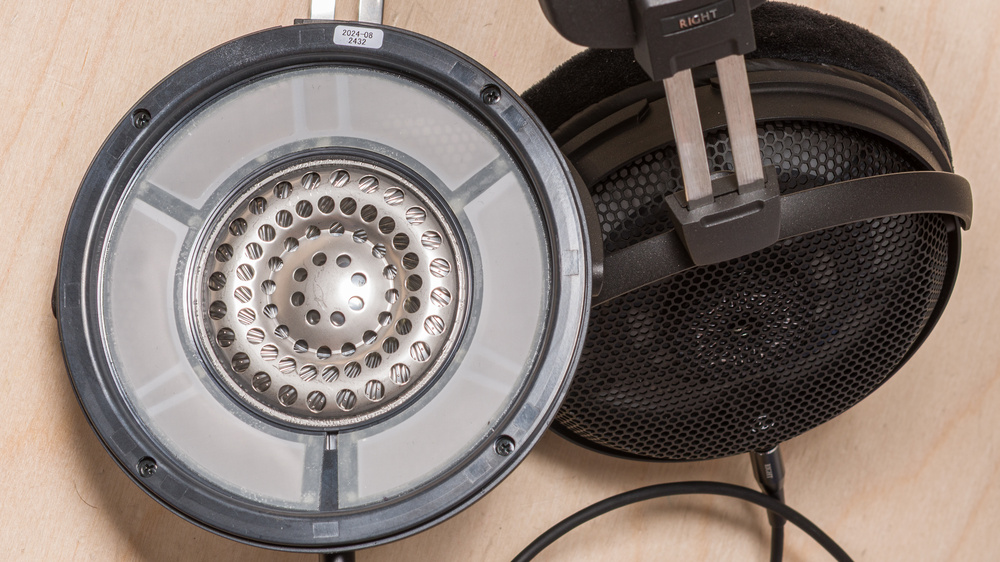
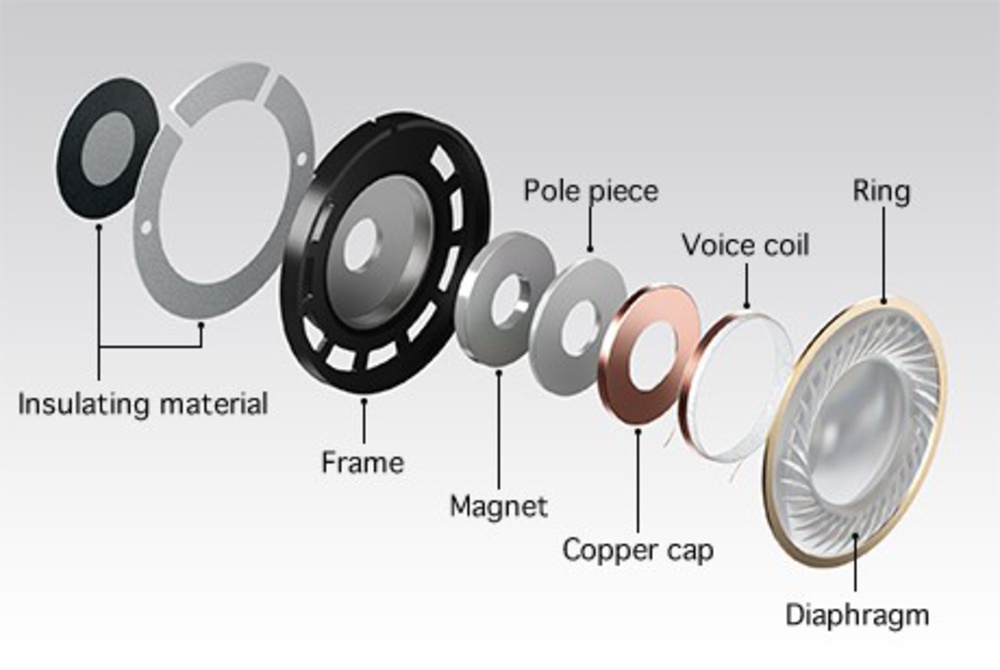
How Planar Magnetic Drivers Work
Planar magnetic drivers (also called orthodynamic or isodynamic drivers) take a different approach. They use an ultra-thin, flat diaphragm with a conductive wire pattern embedded across its surface, stretched taut within a frame. Arrays of magnets on one or both sides create a magnetic field that pushes and pulls the entire diaphragm when an audio signal flows through the traces. In effect, the diaphragm acts as a large, flat voice coil. The movement of this flat membrane produces sound waves, similar in principle to a dynamic driver but with the force spread out across the diaphragm rather than only at a coil in the center.
Planar magnetic drivers are much less common than dynamic drivers because they're harder to make, but they're a fixture of the high-end audiophile world. Notable examples include the HiFiMan Sundara 2020 and Audeze Maxwell Wireless. A few in-ear monitors, like the 7HZ Timeless, use tiny planar drivers, but most designs are full-size headphones. Older planars like the Audeze LCD 2 Classic/LC2C used heavy magnet arrays on both sides and often weighed over 500 g. Newer models use thinner diaphragms and sometimes magnets on just one side to reduce weight. Still, planars are generally bulkier than dynamics and often need more power to drive properly, with many benefitting from a dedicated headphone amp.
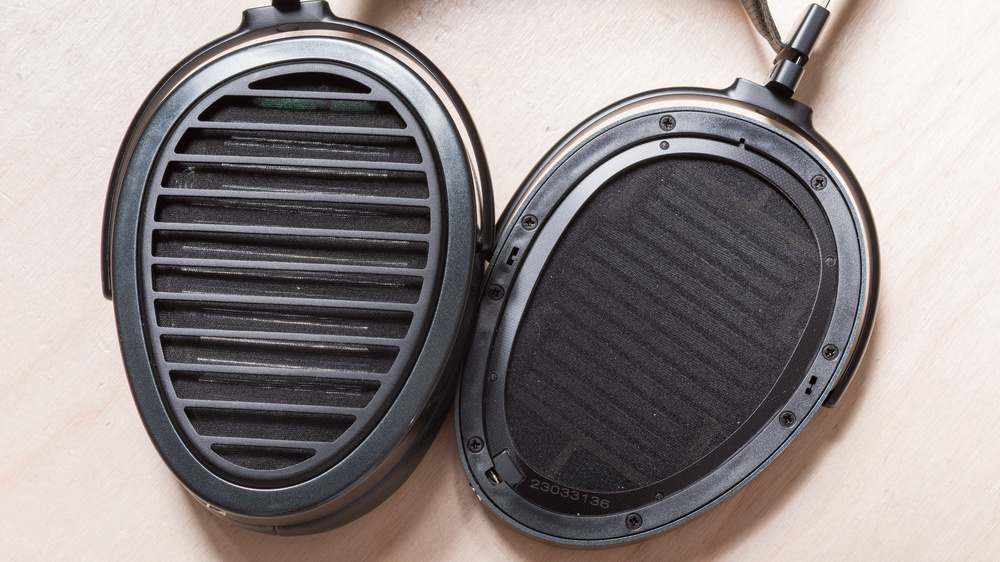
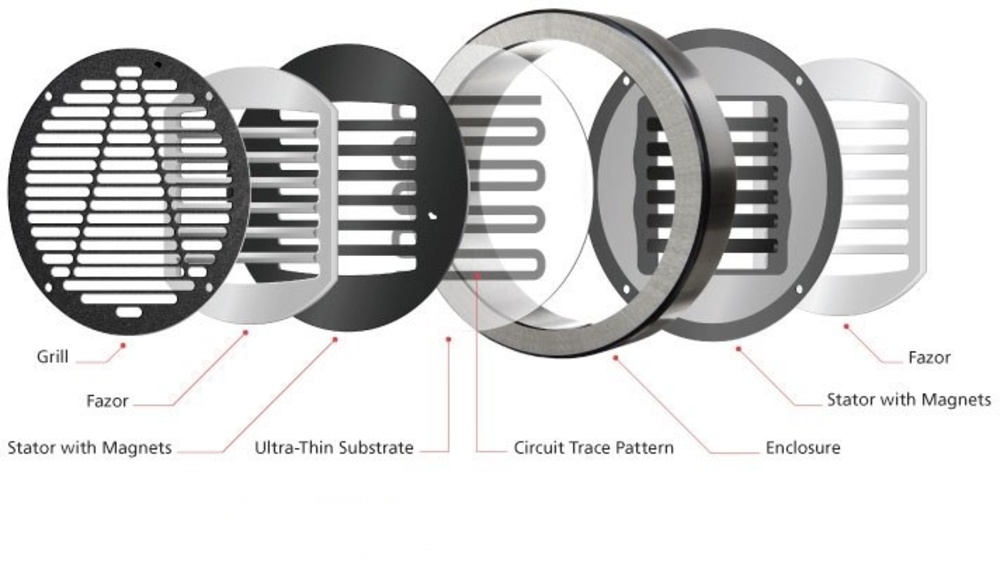
Bass Response
One of the biggest differences between dynamic and planar headphones is bass performance. Planar magnetic designs are known for excellent bass extension and control, often reaching down to 20Hz with minimal roll-off or distortion. Their large, flat diaphragms move air evenly, producing clean, accurate low-end. Measurements consistently show that planars outperform many dynamic drivers in low-bass clarity. For example, despite both being open-backs, the HiFiMan Edition XS deliver stronger low-bass than similarly priced dynamic models like the Sennheiser HD 560S.
On the other hand, dynamic driver headphones often compensate for this lack of low-bass with more mid-bass punch, which is great for kick drums or electronic beats, but they can struggle with deep low-bass extension. Many open-back dynamics roll off below 40–50 Hz. While modern designs like the Sennheiser HD 490 PRO can reach 20Hz in tests, their low-bass region is still fairly subdued relative to their high bass and weaker than comparable planar magnetic headphones. Closed-back dynamics like the Sony MDR-7506 can boost low bass with sealed designs and acoustic chambers, but this sometimes introduces distortion or a 'boomy' sound if not well-tuned.
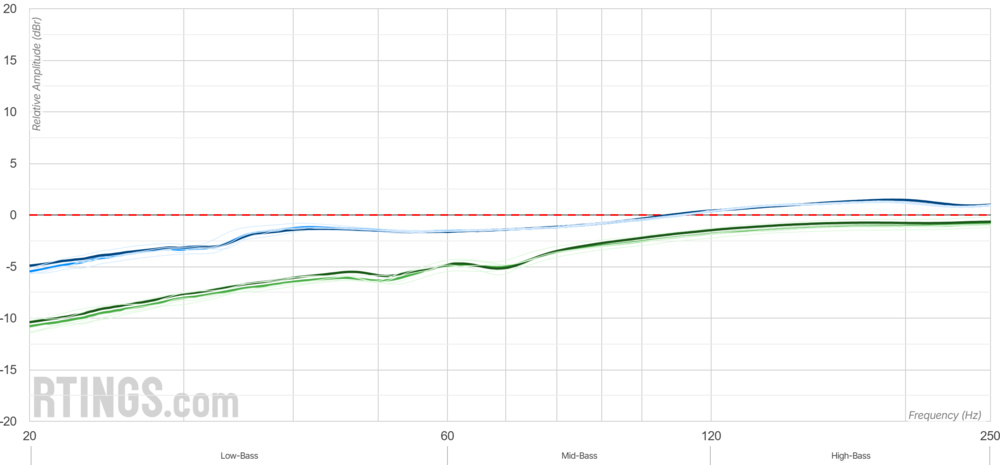
Stereo Matching
To create a convincing stereo image, left and right headphone drivers must be closely matched. Any mismatch in frequency or phase can blur spatial cues, while a loose group delay can create a woofy, tubby-feeling bass. Dynamic drivers, with decades of mass production experience behind them, are relatively easy to match thanks to their simpler, well-understood components. Planar drivers have become popular relatively recently and, as a result, are harder to manufacture consistently, making mismatches more likely, especially in treble or phase. The ultra-thin diaphragm they use is tricky to manufacture and can be fragile. That said, high-quality models of both types usually display well-matched left and right drivers. Brands like Audeze hand-match their planar drivers to within ±1 dB, and mid-range planar models like the Audeze MM-100 have similarly impressive stereo-matching performance to premium dynamic models like the Sennheiser HD 800 S. In general, while stereo matching might be easier with dynamic drivers, it's more of a test of manufacturer quality control and reliability than a reflection of driver type per se.
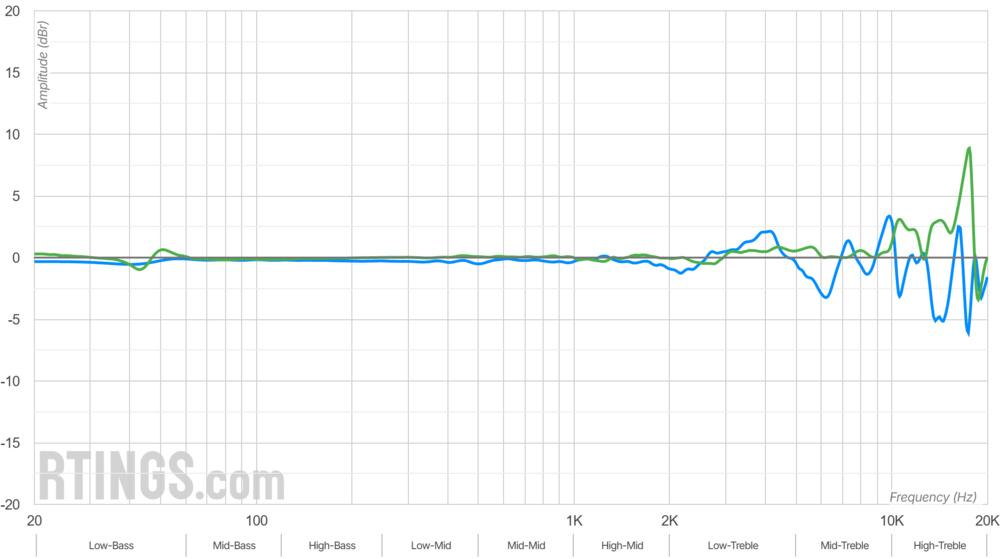
Harmonic Distortion
Harmonic distortion refers to unwanted frequencies added to your audio by a headphone driver during playback. Lower distortion means a cleaner, more accurate sound. Once again, both types of drivers are capable of outstanding results here, with manufacturer quality control and design being more important than driver type. For example, mid-range audiophile models like the Audeze MM-100 can have remarkably low distortion even at high volumes, just like the dynamic drivers of the Beyerdynamic DT 1990 PRO MKII. Others, like the HiFiMan Edition XS, show middling results that aren't far from the Bose QuietComfort 45/QC45 Wireless' mediocre distortion performance.
Once again, in practice, both types can deliver distortion levels well below audibility under normal use. Distortion is hard to hear in regular listening and is also usually more a consequence of manufacturer quality control than driver design.
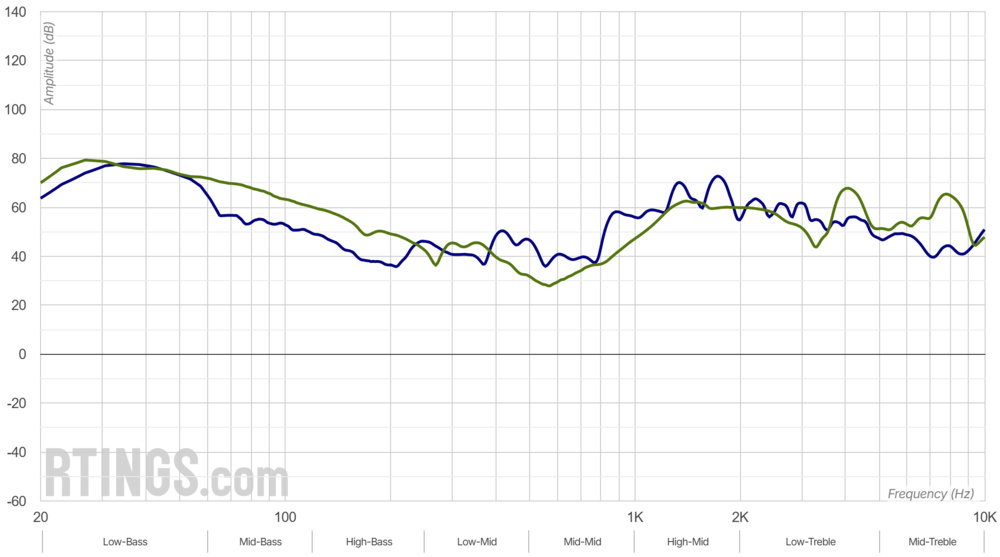
Efficiency and Amplification
When it comes to efficiency, once again, what was once accepted wisdom is now less true. Dynamic drivers have usually been thought of as more efficient, meaning they produce a high enough output volume from standard headphone ports and don't need dedicated amplifiers. To a point, that cliche was born from truth: planar headphones like the Audeze LCD 2 Classic/LC2C tended to have low sensitivity and required a lot of current to reach their full potential, meaning they often sounded underpowered without a proper amp. But newer planars like the Audeze MM-100 work well from a laptop's AUX port. At the same time, Sennheiser's lineup of premium dynamics, including the flagship Sennheiser HD 800 S, often require a dedicated amp or DAC to get the best out of them.
That said, most planar magnetic headphones have impedance curves that closely match their linear resistance, meaning their impedance stays consistent across frequencies. As a result, they're less affected by the output impedance of the device driving them. Dynamic headphones, especially closed-back or less damped designs, often show greater impedance variation in the bass region, which can alter their tonal balance when paired with high-output impedance gear. But, as we've seen throughout this article, every pair of headphones is different, so be sure to check out our Electrical Aspects test results before buying a pair of headphones.
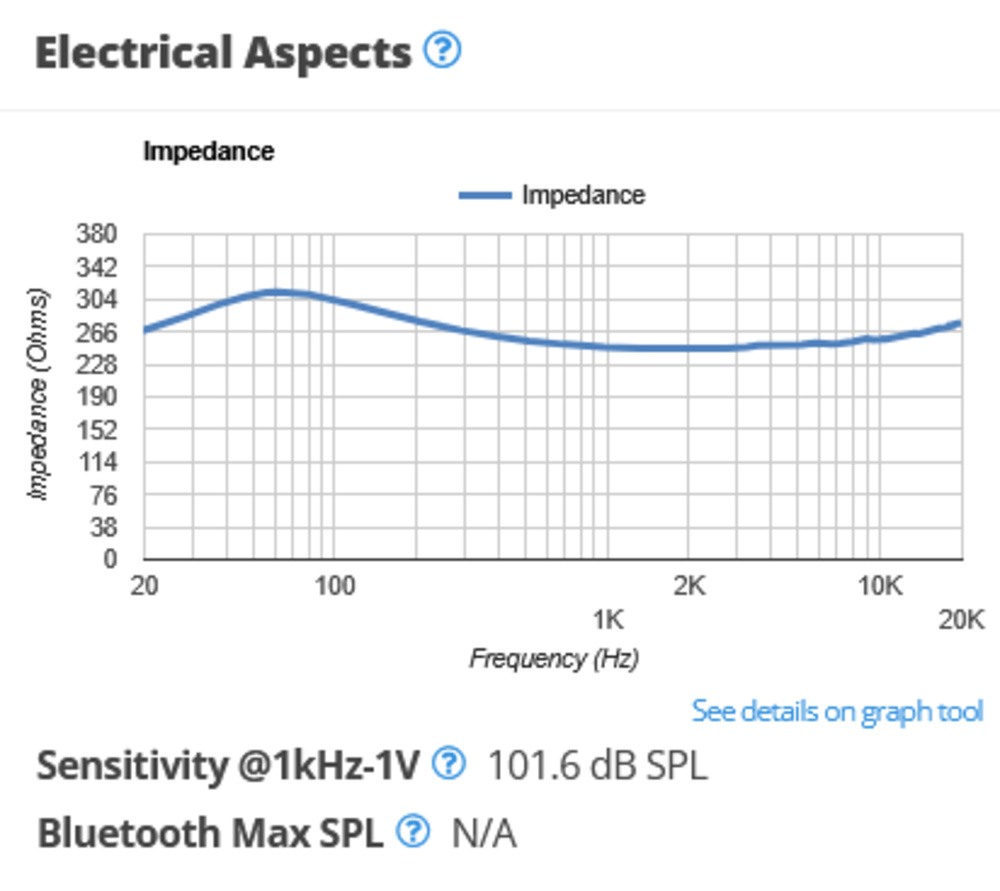 |
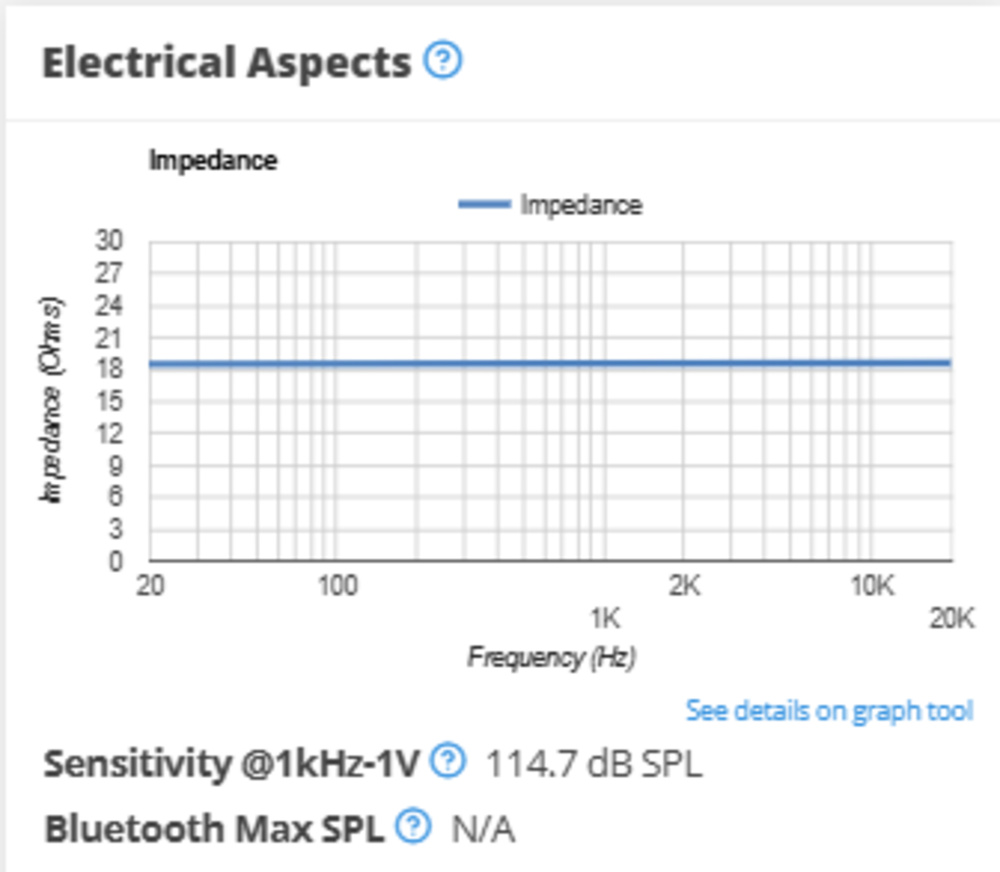 |
Weight
Planar magnetic headphones are usually heavier than dynamic models due to their larger diaphragms and drivers that contain multiple magnets. Compare the 580 grams the Audeze LCD 2 Classic/LC2C weighs against the 260 grams the Sennheiser HD 660S2 weighs. That said, newer planars like the HiFiMan Sundara 2020 (394 g) have lighter builds. But, in general, dynamic headphones are lighter and more portable. They're also common in on-ear, in-ear, and wireless designs, making them the go-to for travel, workouts, or long wear. Planars tend to be made with stationary, indoor listeners in mind, although more portable options like the Audeze Maxwell Wireless do exist (though they're still fairly heavy).
Open or Closed-Back
Since planar manufacturers have tended to target the audiophile market, most planar headphones are open-back, offering a spacious, natural sound at the expense of poor leakage and isolation performance. They're best for quiet environments where you can sit uninterrupted. That said, as the popularity of planar models has grown and the market for more affordable models expanded, closed-back planar models like the Audeze Maxwell Wireless have become more common. Still, if you're searching for a closed-back model, you'll mostly encounter dynamic headphones, with many closed-back options like the Sony ULT WEAR built for noise isolation and public use.
Price
Dynamic headphones range from freebies given out by airlines to ultra-premium $4,000 models, largely because the technology is so common and widely used. Their simpler design is more widely understood by manufacturers, making them easier to scale across all price points, resulting in a far broader range of options than planar magnetic headphones. On the other hand, planar magnetic headphone manufacturers used to focus on the more premium audiophile or professional markets, but affordable options like the HiFiMan HE400se have broadened access. Once again, the devil is in the details. Some planars offer great value for their price, and some dynamics are incredibly expensive.
Quality Control
Planar magnetic drivers use extremely thin diaphragms stretched across magnetic arrays, which can make precise assembly more challenging than dynamic designs. This added complexity means quality control is especially important to ensure channel matching and reliability. Dynamic drivers, being simpler and more mature in mass production, are generally easier to manufacture consistently. That said, there's no clear industry-wide evidence that one driver type has worse QC than the other. Once again, what matters most is the reputation and practices of the specific manufacturer.
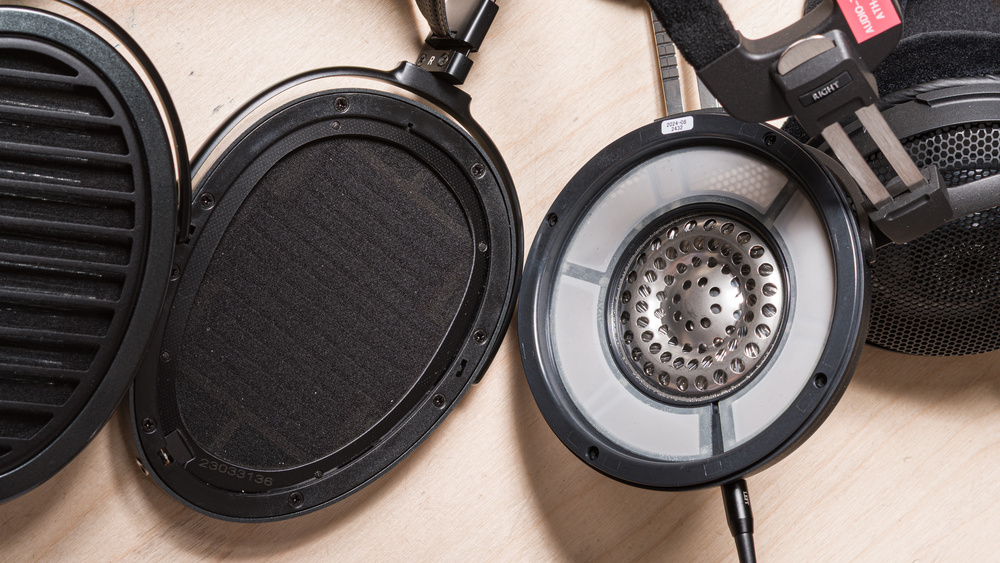
Conclusion
Dynamic drivers produce sound using a moving coil and diaphragm, while planar magnetics rely on a flat, evenly driven membrane suspended between magnets. Dynamics tend to be lighter, versatile, easy to drive, and widely available at all price points. Planars, on the other hand, are generally heavier and can be more power-hungry but tend to offer superior bass extension.
However, while driver design matters, overall sound quality often comes down to build quality and manufacturer precision. A well-made dynamic headphone can outperform a poorly tuned planar, and vice versa. Stereo matching, distortion, and build quality are more about execution than driver type alone.
Understanding how each driver technology works can help you make informed purchasing decisions, but it's important to look closely at the specific details of any pair of headphones you're considering. Don't rely on marketing hype: check measurements, reviews, and user experiences on forums such as Reddit to see how well a particular model is actually made and tuned.
Recent Updates
07/04/2025: We rewrote this article to provide more recent examples, accurate information, and more useful advice to our readers.
